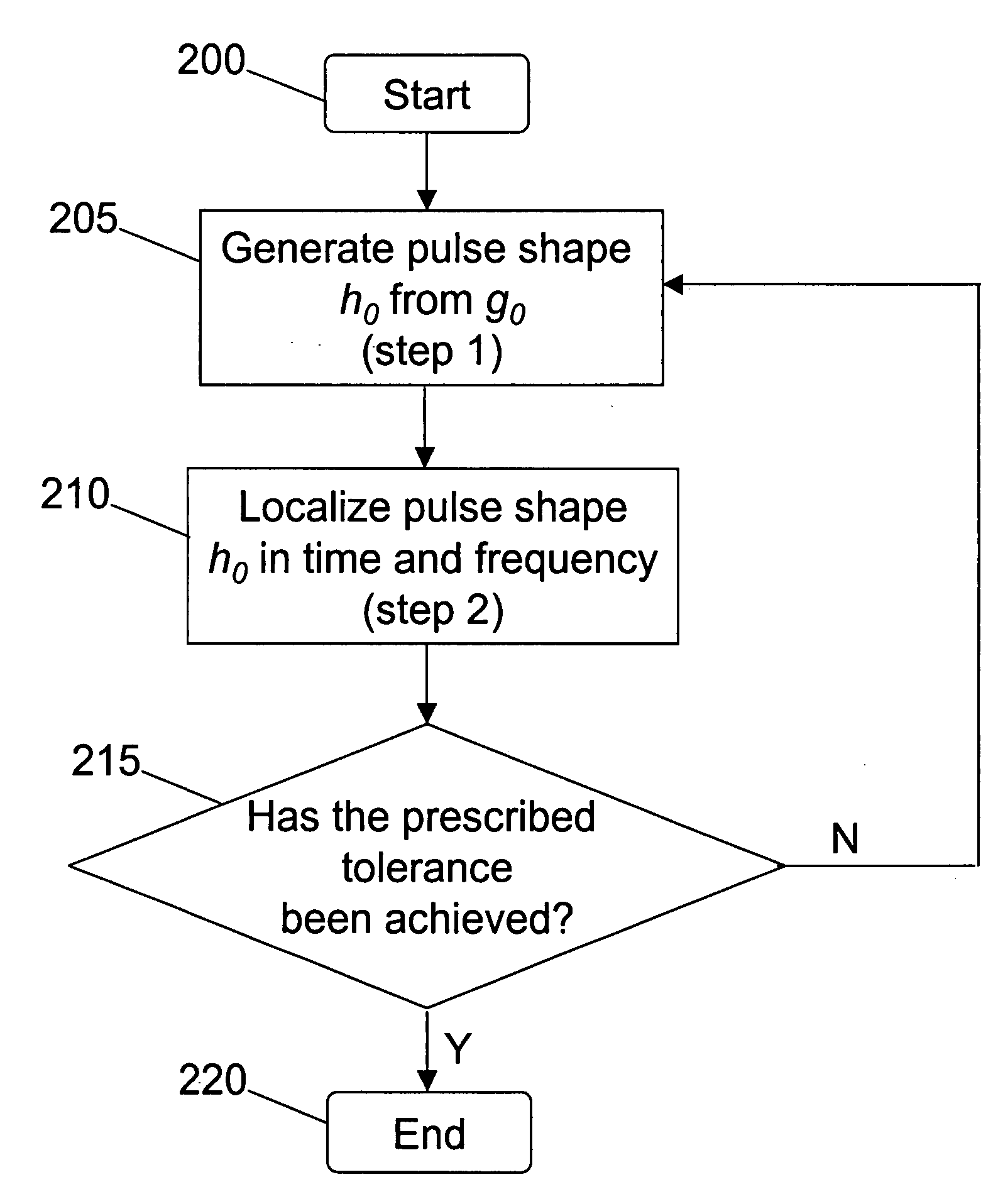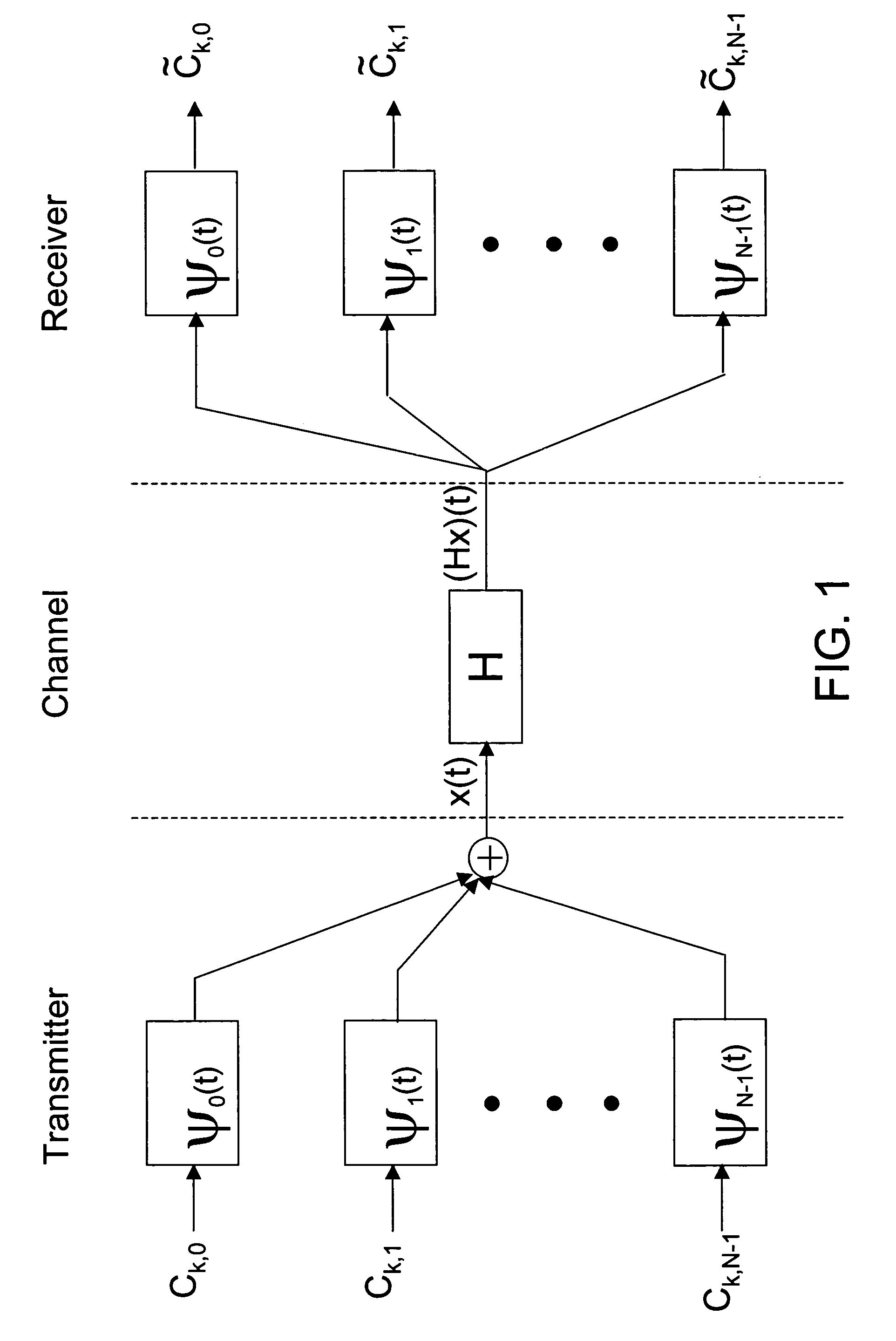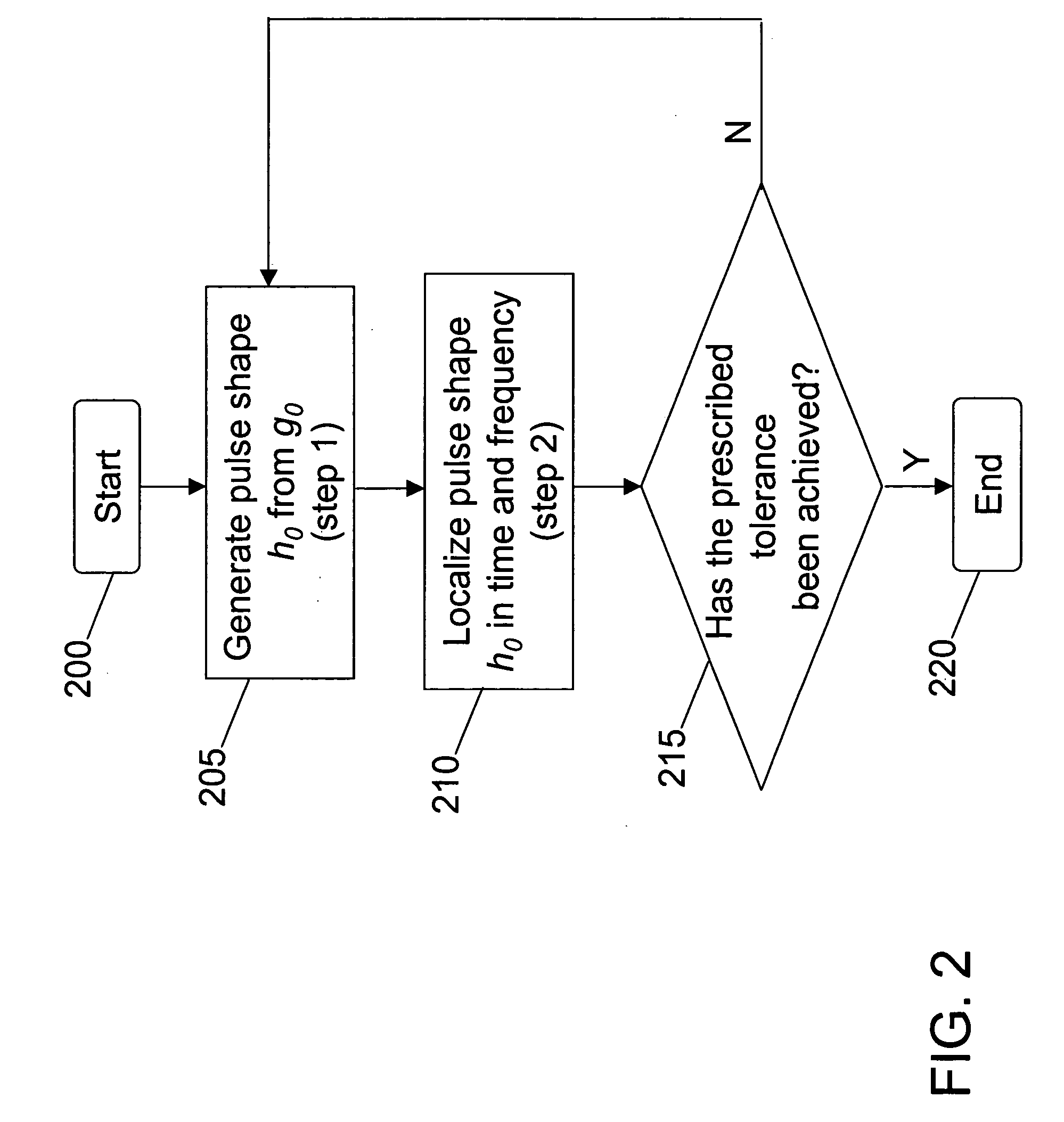Method for pulse shape design for OFDM
a pulse shape and data technology, applied in the field of wireless transmission and broadcasting, can solve the problems of frequency distortion, three conditions cannot be satisfied simultaneously, limited usable range of electromagnetic spectrum allocated for wireless channels on any communication system, etc., to reduce equalizer complexity, maximize the bit-error performance of the ofdm system, and high data rate in wireless transmission
- Summary
- Abstract
- Description
- Claims
- Application Information
AI Technical Summary
Benefits of technology
Problems solved by technology
Method used
Image
Examples
Embodiment Construction
[0032] Generally, the present invention provides a pulse shaping method for OFDM and OFDMA. OFDM, as used herein, refers to orthogonal frequency division multiplexing for transmission of information signals. An information signal refers to a voice, data, audio, imagery, or video signal, or any other type of signal representing content. The information signal represents content by means of binary symbols, with each symbol having one or more bits.
[0033] Information signals according to the present invention are transmitted by modulating carriers at different frequencies. The carriers are represented by a pulse shape, also referred to herein as a transmission pulse, designed in the present invention to form an orthonormal system. A pulse shape, as used herein, comprises a time-frequency localized signal, such as a Gaussian-type pulse or a raised cosine pulse.
[0034] Aspects of the present invention provide for the iterative design of a pulse shape that has a prescribed number of taps ...
PUM
 Login to View More
Login to View More Abstract
Description
Claims
Application Information
 Login to View More
Login to View More - R&D
- Intellectual Property
- Life Sciences
- Materials
- Tech Scout
- Unparalleled Data Quality
- Higher Quality Content
- 60% Fewer Hallucinations
Browse by: Latest US Patents, China's latest patents, Technical Efficacy Thesaurus, Application Domain, Technology Topic, Popular Technical Reports.
© 2025 PatSnap. All rights reserved.Legal|Privacy policy|Modern Slavery Act Transparency Statement|Sitemap|About US| Contact US: help@patsnap.com



